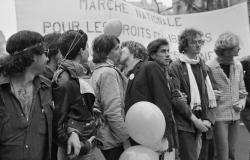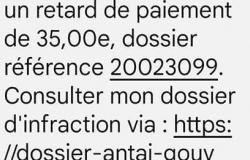TESTIMONIALS – The speed limit for motorists on the Paris ring road will be reduced by 20 km/h from October 1. A policy that disadvantages suburban residents and does not guarantee a reduction in pollution, users criticize.
Frederic sighs. “In these conditions, what’s the point of getting up at 5:30 in the morning to deliver your products if you can’t drive in peace?” The 32-year-old trader, who uses the Paris ring road “at least three days a week” to stock up on fruit and vegetables in Loiret and Oise, sharply criticizes the speed limit on this major Parisian road to 50 km/h from October 1.
The aim, according to Anne Hidalgo, who initiated this project: to reduce noise pollution for residents living near the ring road and reduce air pollution. The measure, already announced in November 2023 by the Paris mayor – who also wants to reserve one of the ring road lanes for carpooling – is far from being unanimous among the approximately 1.2 million daily users of this axis.
Penalizing for non-Parisians
“The advantage of the ring road is precisely that it allows you to go from one town to another without wasting hours there,” Régis, who lives near Antony – in the south of the capital – and works in Argenteuil, in the far north, immediately gets annoyed. Like 80% of the users of the axis, this teacher is not Parisian, “because it has become too expensive to find accommodation in the capital”he explains. “It would take three RERs and an hour and a half in transport for me to arrive at work on time”the thirty-year-old still deplores, pointing out the poor transport service from suburb to suburb. “Limiting it to 50 km/h penalizes those who cannot live in Paris because it is too expensive and who are forced to use their vehicle to get around.”he criticizes.
“This measure will have a direct impact on journey times and will once again penalise the French on the other side of the ring road who cannot do without their vehicles for their daily journeys,” Philippe Nozière, president of the association, emphasizes: “40 million motorists”. Frédéric, for his part, blames a measure which will especially penalise workers who, like him, use the route in the early hours of the day. “We should instead implement variable speed limits depending on the time of day, to allow those who get up early to deliver to be able to drive as they please.”the trader suggests.
“Questionable” environmental gain
Especially since users remain doubtful about the results promised by the mayor. The town hall refutes the risk of increased congestion, stating that such a measure would avoid the effects “accordion” produced by successive accelerations and decelerations. “I’m not sure how effective the measure will be,” Kalya confesses, independent nurse who regularly uses the ring road. “This will cause even more traffic jams on the ring road”worries the Francilienne, who claims to already spend more than “20 minutes every morning in traffic jams.” “It is an ideological measure that is not based on any real impact study”scolds Philippe, who is taking the ring road on his motorbike. “several times a week” to get to his Paris office. “Between 50 and 70 km/h, there is no major reduction in greenhouse gas emissions,” the computer scientist gets annoyed.
Several elected officials also pointed out this lack of convincing results. “While the environmental gain of a reduction from 130 to 110 km/h is demonstrated, that of 90 to 70 is already very questionable both in terms of NO2 (nitrogen dioxide) pollution and noise.”estimated five Parisian elected officials, including Senator Agnès Evren, in a column published in the columns of Figaro in December 2023. “None of the published studies have ever demonstrated the benefit of reducing the speed from 70 to 50 km/hour”they had further argued.
In a report published in February 2014, the Environment and Energy Management Agency (ADEME) stated that “Above 70 km/h, speed reductions have a rather positive effect on particle and nitrogen oxide emissions.” In concrete terms, in areas where high traffic speeds are permitted, driving more slowly without traffic jams results in a reduction in fuel consumption and therefore in pollutant emissions. However, the result is less guaranteed in the event of a speed limit below 70 km/h. “This effect is rather negative,” even affirmed the Ademe study, according to which it was necessary “take into account in particular the effect of speed limits on congestion”. In fact, the results of such a reduction are “much more contrasting” in 50km/h zones, the report also noted.
Noise reduction
The Paris city hall also set a target of reducing noise pollution for the 500,000 residents living along this Parisian traffic route. “This will be a gain in quality of life which will obviously be major,” boasted David Belliard, deputy mayor of Paris. According to Bruitparif, this limitation would effectively reduce noise by 2 to 3 decibels at night, when cars are driving the fastest. At the wheel of her car at Porte de Versailles, Céline looks understanding. “I imagine it must be annoying waking up every morning to the sound of horns and roaring engines.”says the forty-year-old, who claims to support the Parisian mayor’s measure. “It is in line with history to make our cities less polluted, quieter places,” she explains.
“I can hear the noise argument”Philippe concedes. But according to the computer scientist, today’s cars are much quieter than they were ten years ago, the computer scientist points out, and noise pollution is mainly due to the passage “tampered trucks and motorcycles”. “Here again, the measure is not adapted, it does not take into account all the commuters who leave for work every morning”.





